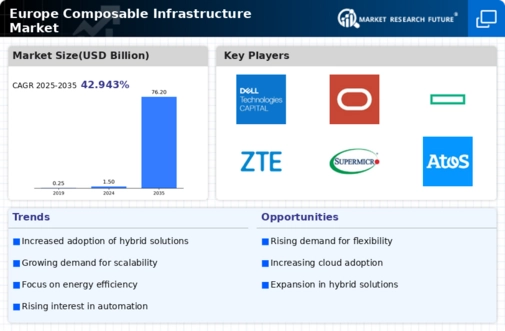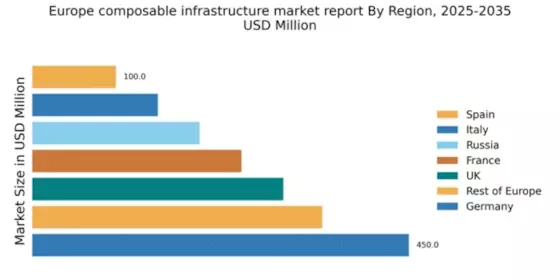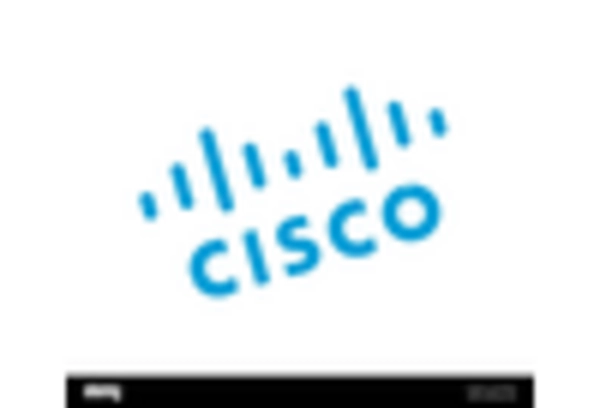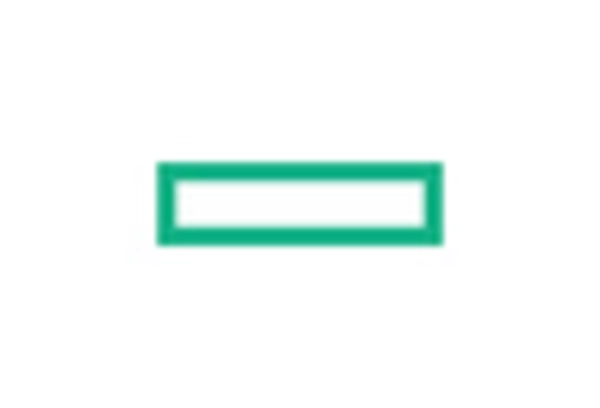Germany : Strong Growth Driven by Innovation
Germany holds a dominant position in the European composable infrastructure market, accounting for 450.0 million USD, representing approximately 30% of the total market share. Key growth drivers include a robust industrial base, increasing demand for cloud solutions, and government initiatives promoting digital transformation. The regulatory environment is supportive, with policies aimed at enhancing IT infrastructure and innovation. The country is witnessing a shift towards hybrid cloud solutions, driven by enterprises seeking flexibility and scalability in their IT operations.
UK : Strong Demand Across Sectors
The UK market for composable infrastructure is valued at 300.0 million, capturing about 20% of the European market. Growth is fueled by the increasing adoption of cloud services and the need for agile IT solutions across various sectors, including finance and healthcare. Government policies are encouraging digital innovation, with significant investments in technology infrastructure. The demand for composable infrastructure is also driven by the rise of remote work and digital services, leading to a shift in consumption patterns.
France : Focus on Innovation and Sustainability
France's composable infrastructure market is valued at 250.0 million, representing around 17% of the European market. The growth is driven by a strong emphasis on innovation and sustainability, with government initiatives supporting green technology and digital transformation. The demand for flexible IT solutions is rising, particularly in sectors like manufacturing and retail. Regulatory frameworks are increasingly supportive of cloud adoption, enhancing the business environment for IT investments.
Russia : Focus on Localized Solutions
Russia's composable infrastructure market is valued at 200.0 million, accounting for approximately 13% of the European market. Key growth drivers include the need for localized IT solutions and government initiatives aimed at boosting domestic technology development. Demand trends reflect a growing interest in hybrid cloud solutions, particularly among large enterprises. However, regulatory challenges and geopolitical factors can impact market dynamics and investment decisions.
Italy : Investment in Digital Transformation
Italy's composable infrastructure market is valued at 150.0 million, representing about 10% of the European market. Growth is driven by increasing investments in digital transformation across various sectors, including automotive and manufacturing. Government initiatives are promoting the adoption of advanced technologies, creating a favorable environment for IT infrastructure development. Demand trends indicate a shift towards more flexible and scalable IT solutions, reflecting changing business needs.
Spain : Focus on Cloud Adoption
Spain's composable infrastructure market is valued at 100.0 million, capturing around 7% of the European market. The growth is primarily driven by the increasing adoption of cloud technologies and digital services across various industries. Government policies are encouraging innovation and investment in IT infrastructure, creating a conducive environment for market expansion. Demand trends show a rising interest in hybrid solutions, particularly among SMEs looking to enhance operational efficiency.
Rest of Europe : Regional Variations in Demand
The Rest of Europe market for composable infrastructure is valued at 346.47 million, accounting for about 23% of the total European market. Growth drivers vary significantly across countries, influenced by local regulations, economic conditions, and technological adoption rates. Demand trends reflect a mix of traditional and innovative IT solutions, with varying levels of cloud adoption. The competitive landscape includes both local and international players, each adapting to regional market dynamics.


















Leave a Comment